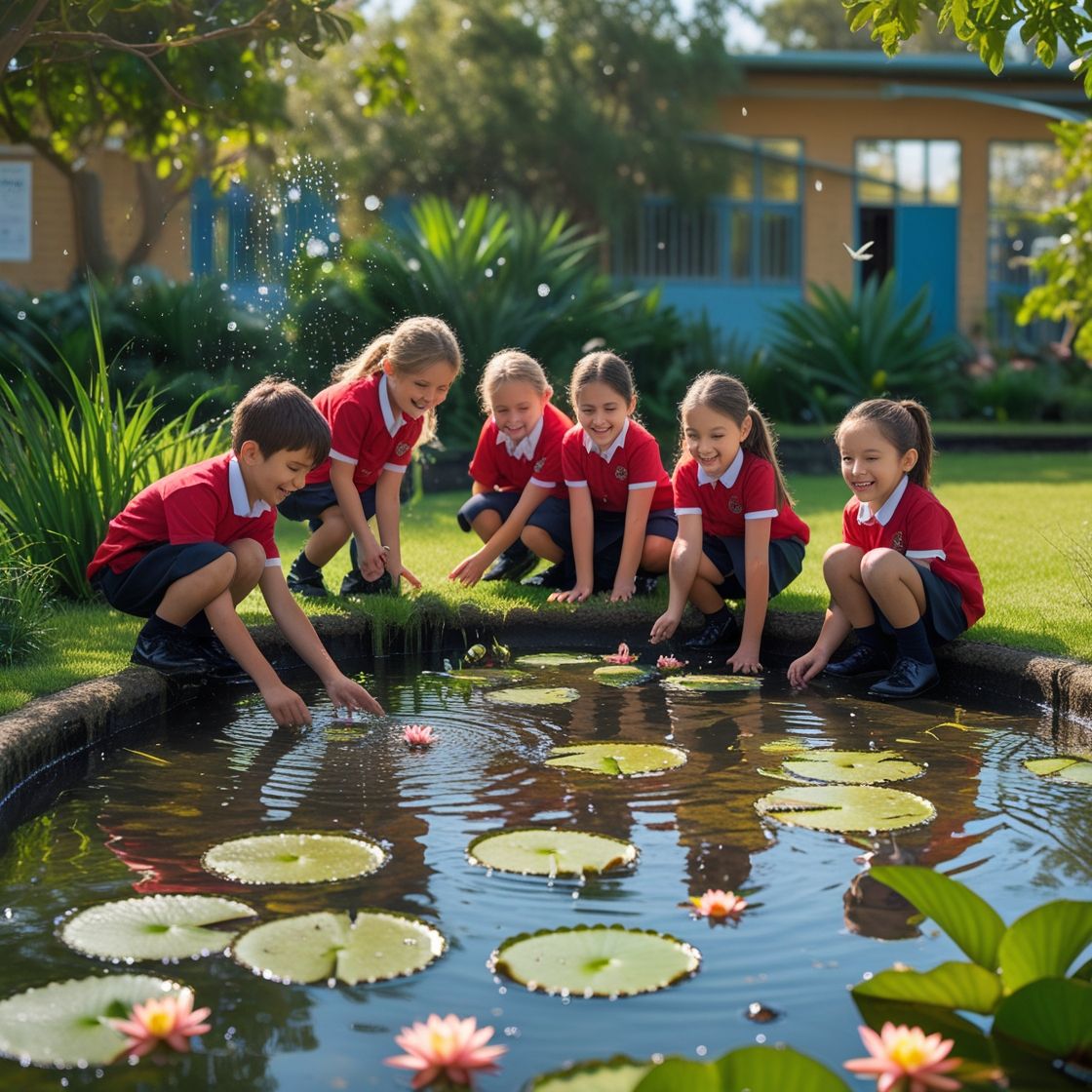Pond for children

Why the PTA Wants to Build a School Pond: Embracing Messy Play and Learning
The Parent-Teacher Association (PTA) is championing an exciting new project: a school pond designed to give children hands-on opportunities for messy play, exploration, and nature-based learning. While the idea of a pond might seem unconventional, this initiative aligns with growing evidence that outdoor, sensory-rich environments profoundly benefit children’s development. Here’s why the PTA is passionate about this project—and why the school community should be, too.
The Power of Messy Play
Messy play—a cornerstone of early childhood development—encourages creativity, problem-solving, and resilience. Splashing in water, squelching mud through fingers, and digging in soil are not just “fun”; they’re critical for sensory integration, fine motor skills, and emotional regulation. A pond naturally invites this type of unstructured play. Children can investigate aquatic plants, build miniature dams, or observe insects, all while engaging their senses in ways classroom settings rarely allow. In a world where screen time often dominates, a pond offers a refreshing, tactile connection to the physical world.
A Living Classroom
Beyond play, a pond is a dynamic educational tool. Science lessons come alive as students study ecosystems, track frog life cycles, or test water quality. Math skills are reinforced through measuring rainfall or calculating plant growth rates. Literacy thrives as children journal observations or write imaginative stories inspired by pond creatures. Even art classes benefit, with natural materials sparking creativity. This interdisciplinary approach fosters curiosity and critical thinking, making learning tangible and memorable.
Nurturing Environmental Stewardship
A school pond teaches children to care for the environment. By maintaining the habitat—planting native species, monitoring wildlife, or cleaning debris—students learn responsibility and the importance of biodiversity. These experiences cultivate empathy for nature, inspiring future eco-conscious citizens. In an era of climate uncertainty, fostering this connection early is invaluable.
Building Community
The pond isn’t just for students—it’s a community asset. Parents, teachers, and local experts can collaborate on its design and upkeep, strengthening ties between the school and families. Seasonal events, like pond clean-up days or nature festivals, create shared memories and pride. Moreover, it offers a calming green space for mindfulness activities, benefiting mental health for all ages.
Addressing Concerns
Safety and maintenance are valid considerations, but the PTA has plans to mitigate risks. The pond will be shallow, securely edged, and supervised during use. Native plants and natural filtration can ease upkeep, while student-led monitoring teams promote ownership. Partnerships with local environmental groups could provide guidance and resources.
A Legacy of Learning
The PTA envisions this pond as more than a water feature—it’s an investment in experiential learning, resilience, and joy. By embracing the messiness of nature, children gain confidence, curiosity, and a deeper understanding of their world. This project reflects a commitment to holistic education, where growth happens not just in classrooms, but through hands-on discovery.
The PTA invites the school community to support this endeavor. Together, we can create a space where splashes, laughter, and learning ripple outward, leaving a lasting impact on every child.